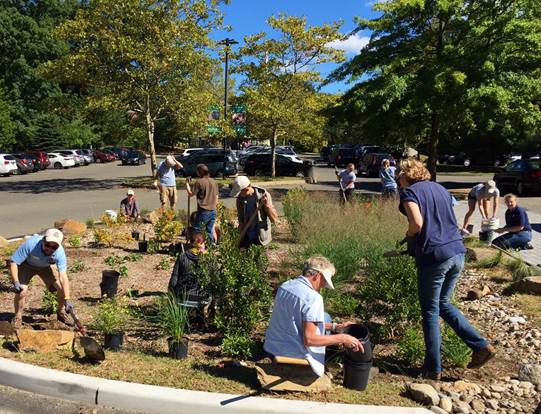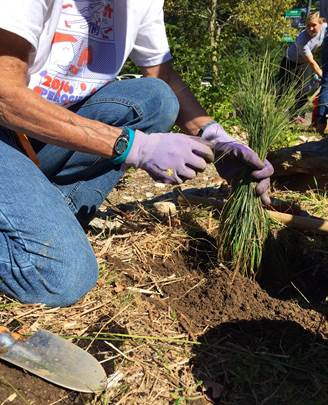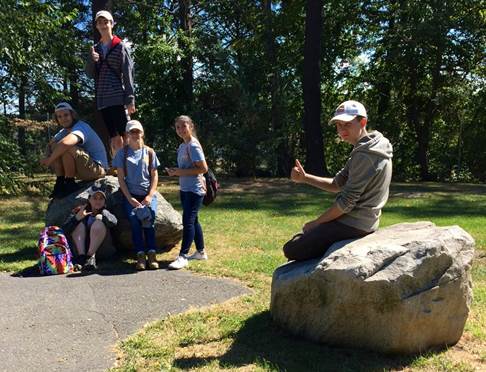
FOR IMMEDIATE RELEASE
September 26, 2016
Contact: Laura McMillan, 540-292-8429
Bridgeport, Conn. – Local volunteers gained green infrastructure skills last weekend at a hands-on rain garden planting workshop led by Save the Sound, a bi-state program of Connecticut Fund for the Environment. Saturday’s workshop at Beardsley Zoo is part of Save the Sound’s ongoing efforts to educate communities on the benefits of green infrastructure, and reinforced a rain garden previously built by Save the Sound—an ideal way to celebrate National Estuaries Week (September 17 – 24).
Green infrastructure refers to the practice of utilizing nature in infrastructural systems like stormwater management. The rain garden built at the Beardsley Zoo parking lot slows the flow of rain water runoff and helps filter polluted rainwater before it flows into the Pequonnock River and Long Island Sound estuary.
“The beauty of rain gardens and other green infrastructure is that they are mostly above ground, so they’re visible. And because rain gardens are visible, they’re not only fairly easy to maintain, they are also great tools for educating people about sustainable water management,” said Kendall Barbery, CFE/Save the Sound green infrastructure program manager. “The rain garden we built together will filter nearly 300,000 gallons of runoff annually, and slowly release the cleaner water into the storm sewer.”
The Beardsley Zoo green infrastructure project, a partnership between CFE/Save the Sound and Connecticut’s Beardsley Zoo, broke ground in April. In May, CFE/Save the Sound and partners installed a rain garden and a porous walkway that allows stormwater runoff from the Zoo’s parking lot to percolate into the soil. Area youth from Groundwork Bridgeport, the Mayor’s Conservation Corps, and the zoo’s Conservation Discovery Corps and Explorers group planted the first round of plants in May.

A multigenerational group of a dozen volunteers, including Save the Sound members and Beardsley Zoo Conservation Corps students, participated in the Saturday morning rain garden planting workshop. They learned about the harmful effects of stormwater runoff and how green infrastructure prevents flooding and water pollution, then gained hands-on experience by planting native perennials to reinforce the existing garden. Species included tussock sedge, liatrus, and switchgrass, among others. All are tolerant of both wet soil and periods of drought—critical as climate change is expected to generate less-frequent, but higher-intensity storms that drop a great deal of rain in a short amount of time.
Together, the porous walkway and the rain garden provide a two-step process for capturing and filtering stormwater runoff, and releasing clean water into the Pequonnock River. In addition, the rain garden and walkway’s prominent location in a highly-trafficked Connecticut tourism destination function as a public education site.
The Beardsley Zoo green infrastructure project is generously supported by the Connecticut Department of Energy and Environmental Protection, Fairfield County’s Community Foundation, Jeniam Foundation, and Newman’s Own Foundation.


4 thoughts on “Press Release: Volunteers build green infrastructure skills at Beardsley Zoo planting”
Comments are closed.